The most common causes of eye infections are viruses or bacteria. Many different types of these infections exist. However, the most common infection that affects the eyes is known as bacterial conjunctivitis. Other well known types of infection are blepharitis, staphylococcal, and styes.
Our eyes are constantly exposed to pathogens, but infections can occur as a result of a compromise in the eye's normal defenses. The infection can be locally or remotely sourced. The infection might be caused by a trauma, the wearing of contact lenses, deficiencies in the immune system, or as a result of a surgery involving the eye.

Eye Infections
If the infection is caused by bacterial conjunctivitis, there may be indications such as red, itchy eyes. There may also be burning or discharge when it comes to the eyes. There might also be more tears than normal, and the eyes might be swollen. Blepharitis is often the cause of tearing, redness, and discomfort. some other signs of this condition might be burning, photosensitivity, itching, and an irritating sensation. With the staphylococcal form of this condition, there might be scaling or crusting along the lashes of the eyes. Styes result in a red, tender bump that will eventually break open, drain, and heal after about a week's time.
- Reports from US primary medical providers estimate that 5% of all patients presented with signs or symptoms of blepharitis, and within primary eye care providers that number increases to >40%.
- Several demographic trends have been reported in blepharitis prevalence rates. Anterior blepharitis appears to occur more often in young females presenting with relatively short symptomatic histories, while chronic blepharitis presents more commonly in fair-skinned females with concurrent rosacea between the ages of 30–50 years.
- Over 35% of chronic blepharitis diagnoses were associated with keratoconjunctivitis sicca (KCS) and meibomian gland dysfunction (MGD). The incidence of MGD increases with age and tends to affect males aged >65 years followed by females aged 45–65 years. Rosacea was diagnosed in 20% of MGD patients and 46% of those with MGD were diagnosed with concurrent seborrheic dermatitis.
- The classification of primary blepharitis has been used to encompass rosacea, seborrhea, and hypersensitivity caused by Staphylococcal toxins. Secondary blepharitis refers to infectious processes, bacterial or viral, or infestation by phthiriasis or Demodex.
- Acute blepharitis, also referred to as lid infection, may be bacterial, viral, or parasitic in etiology. Classification of acute blepharitis can also be broken into acute ulcerative (often secondary to staphylococcal or herpetic infection) and acute nonulcerative (typically allergic). The more common form is chronic blepharitis that encompasses lid inflammation. Early classification work categorized chronic blepharitis into six entities: 1) staphylococcal; 2) seborrheic; 3) staphylococcal/seborrheic; 4) meibomian seborrhea; 5) secondary meibomian inflammation; and 6) meibomian keratoconjunctivitis.
- Blepharitis is commonly cataloged based upon anatomic location. Anterior blepharitis is defined as inflammation affecting the lash margin, involving both staphylococcal and seborrheic blepharitis; and posterior blepharitis is defined as meibomian gland involvement posterior to the lash margin. MGD primarily affects the oil glands located on the posterior lid and therefore is included as a subset of posterior blepharitis. Angular blepharitis tends to occur in the canthal region and may present independent of anterior and posterior etiologies. Marginal blepharitis has been referred to in recent literature as a collective term for involvement of both anterior and posterior blepharitis.
- Although the etiologies of various forms of blepharitis may differ, the treatment modalities show considerable overlap. Primary treatment for blepharitis is lid hygiene involving hyperthermic lid compress, lid margin massage with lash scrubs lasting 3–5 minutes at least two times daily during the acute presentation. Generally, patients are more receptive to this level of lid hygiene commitment if they report moderate-to-severe discomfort accompanied by visual disruption. Hyperthermia treatment is critical in order to soften the meibomian secretions, allowing improved gland expression during lid massage. Lash scrubs are typically performed following hyperthermic treatment, which remove accumulated gland expression and follicle debris. Critical within patient education is the chronic nature of blepharitis and the requirement that lid hygiene be performed even after the acute clinical presentation resolves.
Infections involving the eye can occur at any age, and are normally treated aggressively. This is because eye infections can often turn into more serious conditions over time. Those who undergo eye surgery or suffer trauma are more likely to be expose to infections of the eye. Many of these infections are also contagious, and the infections can be spread through contact with the fluid that drains from the eyes. This fluid normally contains bacteria or the virus that has caused the infection.
How to Prevent Eye Infections
In order to avoid contracting an infection such as this, one should wash ones hands before touching the eyes or face. Try to also avoid sharing eye makeup, as this can spread infection. Further to this, the use of eye makeup should be avoided until the infection has completely dissipated. Other things one should avoid sharing includes contact lens equipment, solutions, or containers.
In addition to this, the use of contact lenses should be avoided until the resolving of the infection. Eye medicine, towels, pillows, linens, and handkerchiefs should not be shared. If necessary, wear eye protection when exposed to the cold, heat, or wind. If working with chemicals, use safety glasses.




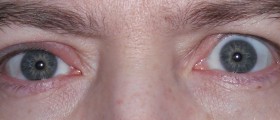
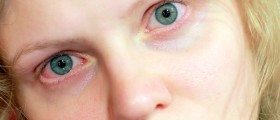

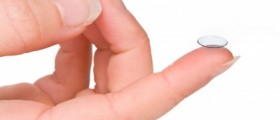





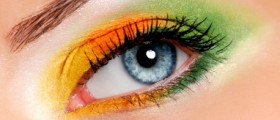


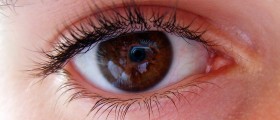
Your thoughts on this
Loading...